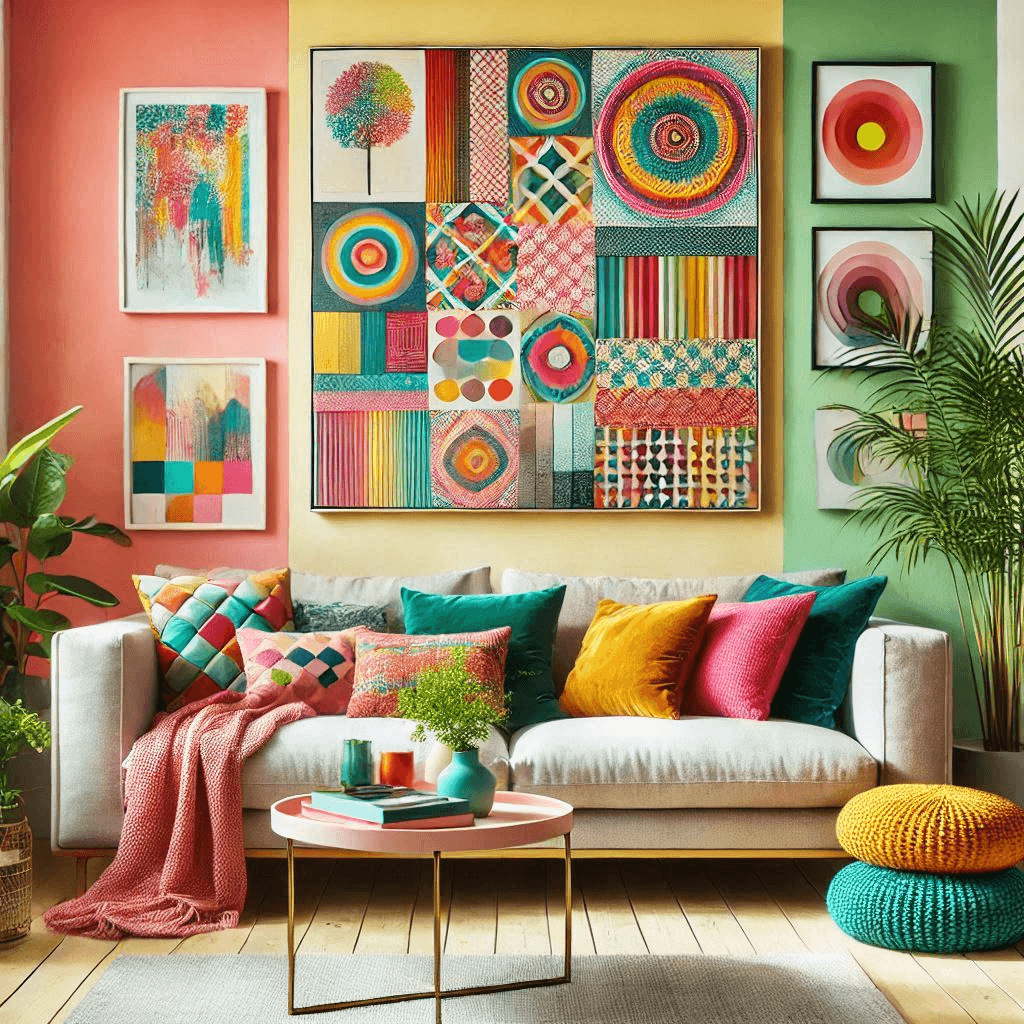Choosing the perfect paint color can completely transform the look and feel of your home. Using paint is one of the simplest and most cost-effective ways to add personality, warmth, and energy to any space. It can shift a dull room into a lively area or create a calm setting perfect for relaxation. With a few brushstrokes, you can highlight architectural features, refresh old furniture, and bring a fresh mood into your environment. In this guide, you will learn how to pick the right colors, explore creative paint ideas, and achieve a professional-looking finish. You will also discover tips for keeping your colorful space looking new. By the end, you will feel more confident and excited about adding that much-needed pop of color to your home.
Choosing the Right Color for Your Space

Select hues that fit your room’s purpose and overall style.
Consider the Room’s Purpose
Each room in your home serves a different goal. A bedroom might need calming colors like soft blues or greens, which encourage rest. A home office could benefit from shades that promote focus, such as gentle grays or muted yellows. In lively areas like living rooms, warmer tones—think shades of orange or sunny yellow—add energy. Even hallways and entryways can shine with subtle pastels that welcome guests. Pick a color that supports what you do in that space, guiding the atmosphere you want to create.
Test Before You Commit
Before painting the entire wall, it is wise to try out samples. By doing this, you can see how the paint looks in morning light, evening shadows, and under artificial lamps. Experimenting ahead of time helps prevent costly mistakes.
Try the following steps:
- Paint a small patch on each wall to see how the hue changes.
- Observe the color at different times of day.
- Use sample cards or stick-on swatches for less mess.
- Compare multiple shades side by side.
Using the Color Wheel for Inspiration
A color wheel is a simple tool that helps you understand how colors relate. Complementary colors, like blue and orange, create a strong contrast. Analogous colors, such as yellow, green, and blue, offer a peaceful flow. If you want bold flair, pick contrasting pairs. For something gentler, choose tones close to each other. It is not about memorizing rules; it is about finding what feels right. By trusting your instincts and referencing the color wheel, you can easily discover appealing combinations for your home.
Creative Ways to Use Paint for a Pop of Color
Consider unique paint techniques to highlight certain areas or details.
Accent Walls
An accent wall is a single wall painted a different shade from the rest, instantly drawing attention. It can emphasize a fireplace, frame a TV, or make a room feel more dynamic. Choosing the right wall and color is key.
Consider these important tips:
- Pick a wall that naturally stands out (e.g., behind a bed).
- Use bold colors to create a striking contrast.
- Keep other walls neutral to avoid overwhelming the room.
- Try patterns, such as stripes, if you want extra flair.
Painted Ceilings
Most people overlook the ceiling, but adding color there can dramatically change a room’s feel. A light, soft hue can make the space seem taller, while a subtle pastel introduces warmth without crowding the eye. Painting the ceiling allows you to frame the room in an unexpected way. Soft blues, warm creams, or even pale grays can create a cozy “ceiling canopy” that makes you look upward and appreciate the entire space. It’s a small change that can have a big impact.
Small Painted Details
Not every project demands a large surface. Sometimes, painting small elements—like interior doors, trim, or even the legs of chairs—adds character without overwhelming the space. For instance, a bright door against white walls can act like artwork. Painted window frames or baseboards draw the eye around the room, guiding viewers toward specific features. If you worry about going too bold, start small. This approach lets you experiment, switch colors more easily, and gradually build confidence in using color throughout your home.
Tips for Achieving a Professional Finish
Proper prep and good tools help ensure a flawless paint job.
Prepare Your Surface
Good preparation sets the stage for a smooth finish. Dirty or uneven surfaces can ruin even the best color choice. Start by cleaning walls and letting them dry. Fill any holes and sand rough areas. A primer coat helps paint stick and ensures color accuracy.
Follow these essential steps:
- Wash walls with mild soap and water.
- Repair cracks and holes with filler.
- Sand surfaces for a smooth texture.
- Apply primer to improve paint adhesion and durability.
Invest in Quality Tools and Paint
Cheap brushes and thin paint will make your job harder. Quality rollers hold paint well, leaving fewer streaks. Good brushes create sharp edges near trim and corners. Choose reputable paint brands known for coverage and durability. Higher-quality paint often needs fewer coats, saving time and effort. While it may cost more upfront, investing in better tools results in a cleaner finish that lasts longer. By prioritizing quality, you ensure that all the work you do today will look beautiful tomorrow.
Take Your Time
Rushing can lead to drips, uneven coverage, and unsatisfying results. Instead, paint in controlled sections and allow coats to dry fully. Take breaks if needed. Patience is crucial when doing corners or cutting along edges. Slow, steady strokes produce an even application. Another trick is to maintain consistent pressure on the brush or roller. Remember, you do not have to finish everything in a single day. Steady progress, done carefully, guarantees a professional look that you can be proud of.
Maintaining Your Colorful Space
Simple routines help keep your painted walls looking fresh longer.
Regular Cleaning
Over time, dust, fingerprints, and scuffs can dull your painted walls. Regular cleaning keeps colors vibrant and extends the paint’s life. Gently wipe surfaces with a soft cloth to remove dust. For marks or stains, use warm soapy water and dry immediately. Avoid harsh chemicals that strip paint. If walls are cleaned a couple of times a year, they remain bright and inviting. Consistent upkeep ensures you continue enjoying that initial “wow” factor long after the paint has dried.
Touch-Ups and Repainting
Even the best paint job may need touch-ups over time. Chips or faded areas can be corrected with leftover paint from the original project. Keep paint cans sealed and stored in a cool, dry place. When touching up, use a small brush or sponge for precision. Blend the edges gently for a seamless repair. If the color becomes outdated or worn, do not hesitate to repaint. Refreshing the paint every few years keeps your space feeling current, clean, and full of life.
Conclusion
A simple pop of color can turn a plain room into a personal haven. Whether you start with a single accent wall or experiment with smaller painted details, adding vibrant shades gives your home a fresh identity. Choosing the right color, testing samples, and considering the room’s purpose ensure you find the perfect fit. With proper preparation, quality tools, and patience, you can achieve a professional, long-lasting finish. Maintaining your painted surfaces keeps them looking new and appealing. There is no limit to what you can create with a brush and a vision. Now that you have these tips, feel free to experiment, play with color, and watch as your space transforms into something truly unique and welcoming.




